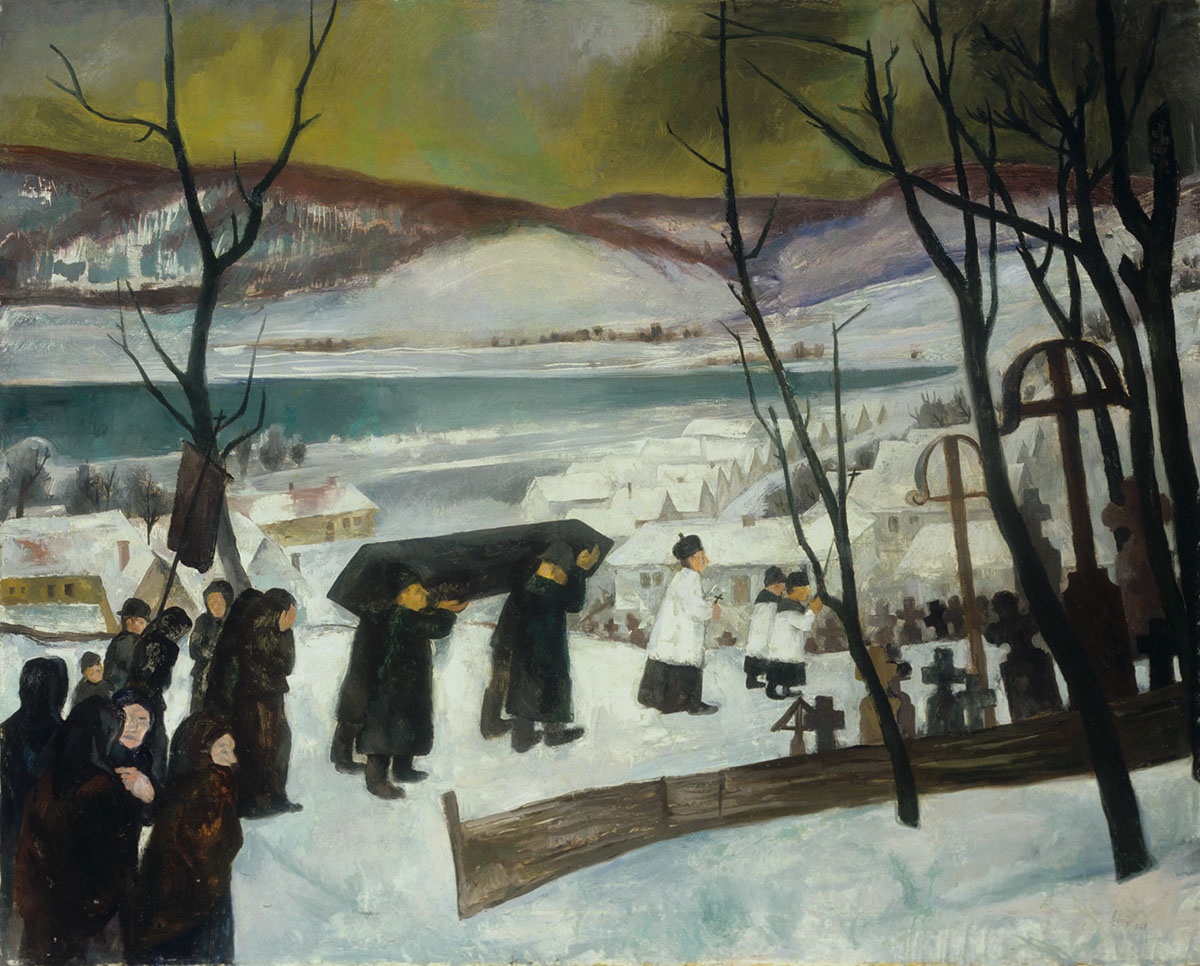István Szőnyi became the leading figure of the youngest generation of artists who arrived on the art scene after World War I, and his “new Classicist” painting had a great influence on his contemporaries. In 1924, the artist moved from the capital city to the village of Zebegény, where he lived, barring stretches of various lengths, for the rest of his life. By the end of the decade, Szőnyi had reverted to the painting traditions of Nagybánya (Baia Mare), and in his works he focused mostly on delicately balanced harmonies of colour and on solving compositional problems. The main motif in the pictures he painted in Zebegény was the Danube Bend, as seen from a variety of viewpoints. His other main works show the everyday lives of people in the village. These two types, landscape and genre piece, come together in Funeral in Zebegény, a burial scene which is imbued with the atmosphere of the winter landscape. Behind the stage-like foreground, the background retreats as though into the wings, while the horizontal bands dividing the layers of the earth are counterpoised by the angular lines of the trees.
en

